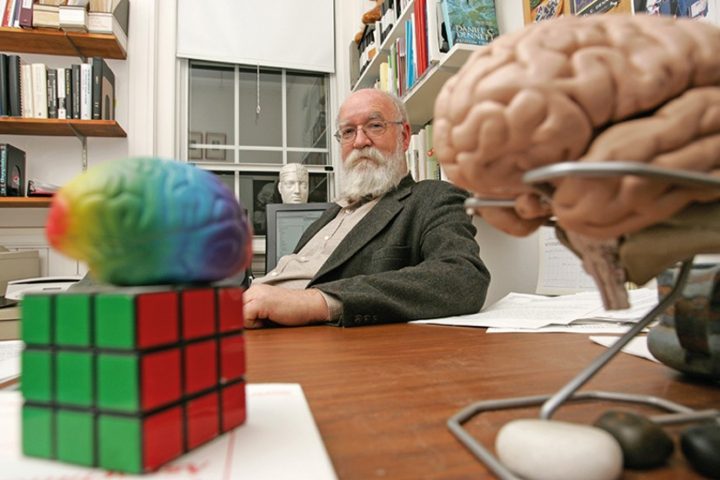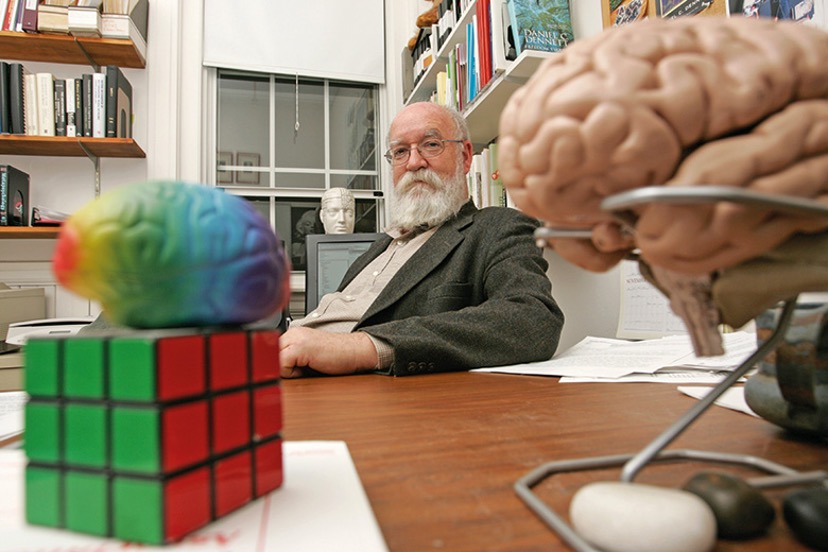I am reminded of the Marx Brothers line: “Who are you going to believe, me or your own eyes?”
— from the book review, “Is Consciousness an Illusion?” by Thomas Nagel, March 2017
Most of us, I suspect, tend to believe much of what we see and hear.
But what if you can’t believe your own eyes? And ears? What if it’s all an illusion?
In Part One, I quoted from recent book review in a New York Review of Books, written by Thomas Nagel. Mr. Nagel shares his praise for a 2018 book by philosopher Daniel Dennett, entitled From Bacteria to Bach and Back.
I have not read the book. But I enjoyed Mr. Nagel’s summary of Dr. Dennett’s ideas, including several selected quotes from the book. It was not clear from Mr. Nagel’s review. however, if Dr. Dennett bothered to address the mystery of dreams, an aspect of consciousness well documented down through human history… but still not well understood by scientists.
And perhaps that’s a problem?

According to Mr. Nagel’s summary of Dr. Dennett’s book, the crux of the professor’s philosophy hinges, to some degree, on the idea that human consciousness operates in two somewhat distinct realms.
A “manifest image”… and a “scientific image”.
Dr. Dennett apparently believes the world humans normally ‘perceive’ is an illusion — an illusion we have been biologically and culturally programmed to believe in, as a result of millions of years of ‘natural selection’ and 50,000 years of increasingly complex human civilization. This is our “manifest” image of the world, and we can’t help but perceive things that way, because of human evolution. It’s not the actual world; it’s an illusion we cannot help but perceive, because it helped us survive and thrive — and evolve — in a dog-eat-dog world.
Mr. Nagel writes:
Most of what we do, and what our bodies do — digest a meal, move certain muscles to grasp a doorknob, or convert the impact of sound waves on our eardrums into meaningful sentences — is done for reasons that are not our reasons. Rather, they are what Dennett calls free-floating reasons, grounded in the pressures of natural selection that caused these behaviors and processes to become part of our repertoire. There are reasons why these patterns have emerged and survived, but we don’t know those reasons, and we don’t have to know them to display the competencies that allow us to function.
Humans are competent and successful, not because we perceive reality accurately, but precisely because we can simplify the world into discrete intellectual elements that have helped us survive, and evolve, for millennia. At least, that’s how I’m understanding the theory. (Just to be clear, Dr. Dennett embraces the theory of biological evolution.)
Reviewer Thomas Nagel quotes from the book:
According to the manifest image, Dennett writes, the world is
full of other people, plants, and animals, furniture and houses and cars… and colors and rainbows and sunsets, and voices and haircuts, and home runs and dollars, and problems and opportunities and mistakes, among many other such things. These are the myriad “things” that are easy for us to recognize, point to, love or hate, and, in many cases, manipulate or even create…. It’s the world according to ‘us’.
According to the scientific image, on the other hand, the world…
…is populated with molecules, atoms, electrons, gravity, quarks, and who knows what else (dark energy, strings? branes?)…
This, according to Dennett, is the world as it is in itself, not just for us, and the task is to explain scientifically how the world of molecules has come to include creatures like us, complex physical objects to whom everything, including they themselves, appears so different.
As with so many dichotomies — “good” vs “evil”… “us” vs “them”… “Democrat” vs “Republican”… “public health” vs “the economy” — we humans often paint our conceptual canvases with only two colors: black and white.
But we know, in our hearts, that the world is painted in shades of gray.
As mentioned, I have not read Dr. Dennett’s book, but if NYRB reviewer Thomas Nagel is giving us an accurate picture of Dr. Dennett’s philosophy, then I have to chuckle.
Yes, my world is indeed full of people, plants and animals, furniture and houses and cars… and colors and rainbows and sunsets. And full of problems and opportunities and mistakes… and yes, it’s the world, according to ‘us’.
But the world of “molecules, atoms, electrons, gravity, quarks and who knows what else…” is in no way distinct from colors and rainbows and haircuts and home runs. Large or small, visible or invisible, these are all “things” — or more accurately, “ideas about things”. Dr. Dennett and some of his fellow scientists seem to believe that, just because something was observed using a microscope, or a telescope, by a person calling themselves a scientist, those observed objects and events automatically become more ‘real’ than the everyday things we all experience on a daily basis.
The truly crazy part is that some scientists come to believe that their theories — about, say, the various molecules and atoms and subatomic particles that comprise material objects — are “more real” than, say, a plate of scrambled eggs.
Reviewer Thomas Nagel sums up his own thoughts about Dr. Dennett’s book this way:
To say that there is more to reality than physics can account for is not a piece of mysticism: it is an acknowledgment that we are nowhere near a theory of everything, and that science will have to expand to accommodate facts of a kind fundamentally different from those that physics is designed to explain. It should not disturb us that this may have radical consequences, especially for Dennett’s favorite natural science, biology: the theory of evolution, which in its current form is a purely physical theory, may have to incorporate nonphysical factors to account for consciousness, if consciousness is not, as he thinks, an illusion. Materialism remains a widespread view, but science does not progress by tailoring the data to fit a prevailing theory.
At any rate, based on what little I know about Daniel Dennett’s book, From Bacteria to Bach and Back, it appears that he may have totally glossed over the whole question of dreams.
And since I, myself, know very little about dreams, I will attempt to tackle that subject next.

